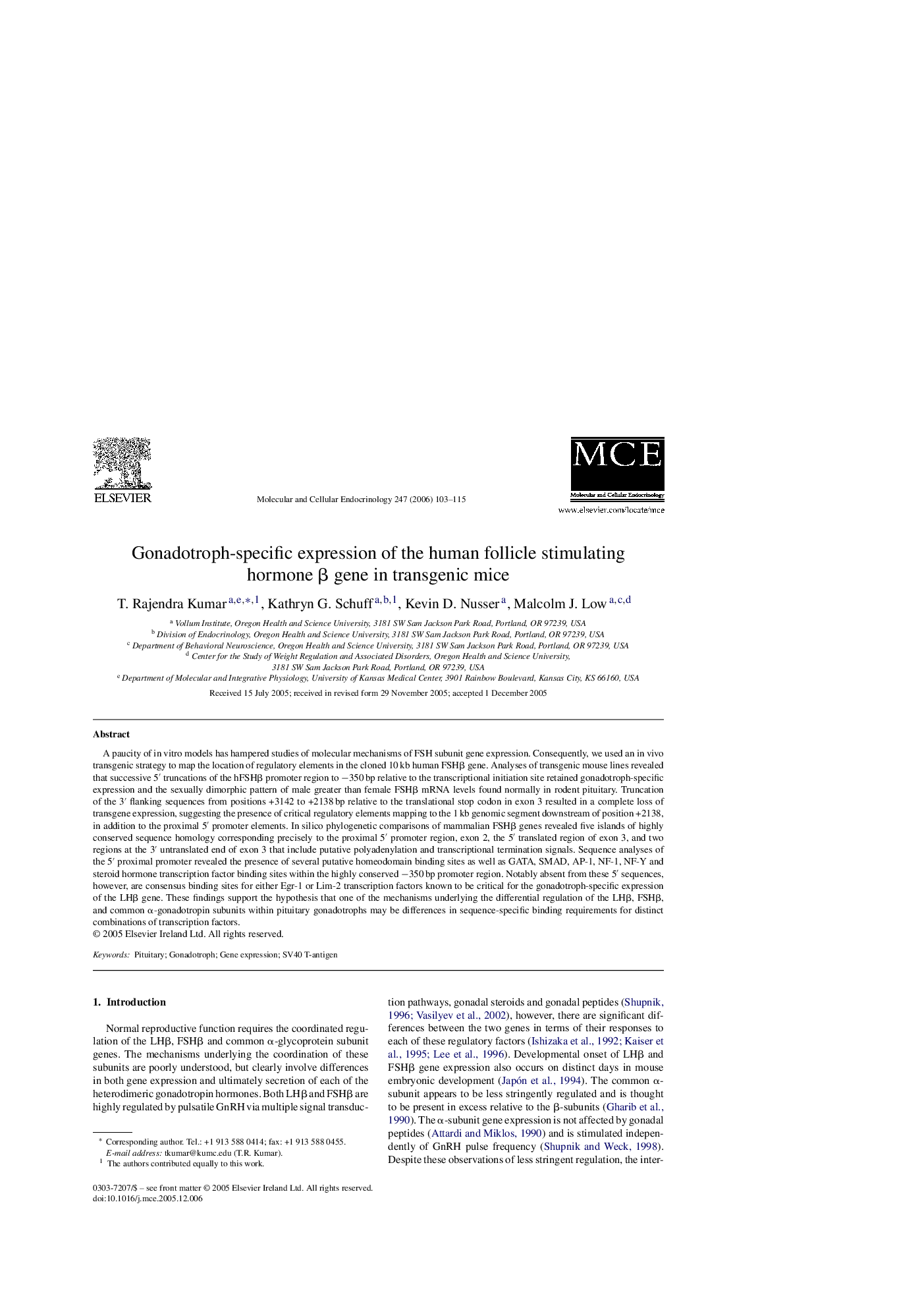| Article ID | Journal | Published Year | Pages | File Type |
|---|---|---|---|---|
| 2198292 | Molecular and Cellular Endocrinology | 2006 | 13 Pages |
A paucity of in vitro models has hampered studies of molecular mechanisms of FSH subunit gene expression. Consequently, we used an in vivo transgenic strategy to map the location of regulatory elements in the cloned 10 kb human FSHβ gene. Analyses of transgenic mouse lines revealed that successive 5′ truncations of the hFSHβ promoter region to −350 bp relative to the transcriptional initiation site retained gonadotroph-specific expression and the sexually dimorphic pattern of male greater than female FSHβ mRNA levels found normally in rodent pituitary. Truncation of the 3′ flanking sequences from positions +3142 to +2138 bp relative to the translational stop codon in exon 3 resulted in a complete loss of transgene expression, suggesting the presence of critical regulatory elements mapping to the 1 kb genomic segment downstream of position +2138, in addition to the proximal 5′ promoter elements. In silico phylogenetic comparisons of mammalian FSHβ genes revealed five islands of highly conserved sequence homology corresponding precisely to the proximal 5′ promoter region, exon 2, the 5′ translated region of exon 3, and two regions at the 3′ untranslated end of exon 3 that include putative polyadenylation and transcriptional termination signals. Sequence analyses of the 5′ proximal promoter revealed the presence of several putative homeodomain binding sites as well as GATA, SMAD, AP-1, NF-1, NF-Y and steroid hormone transcription factor binding sites within the highly conserved −350 bp promoter region. Notably absent from these 5′ sequences, however, are consensus binding sites for either Egr-1 or Lim-2 transcription factors known to be critical for the gonadotroph-specific expression of the LHβ gene. These findings support the hypothesis that one of the mechanisms underlying the differential regulation of the LHβ, FSHβ, and common α-gonadotropin subunits within pituitary gonadotrophs may be differences in sequence-specific binding requirements for distinct combinations of transcription factors.
